Crypto Wallet Development — Thorough Review
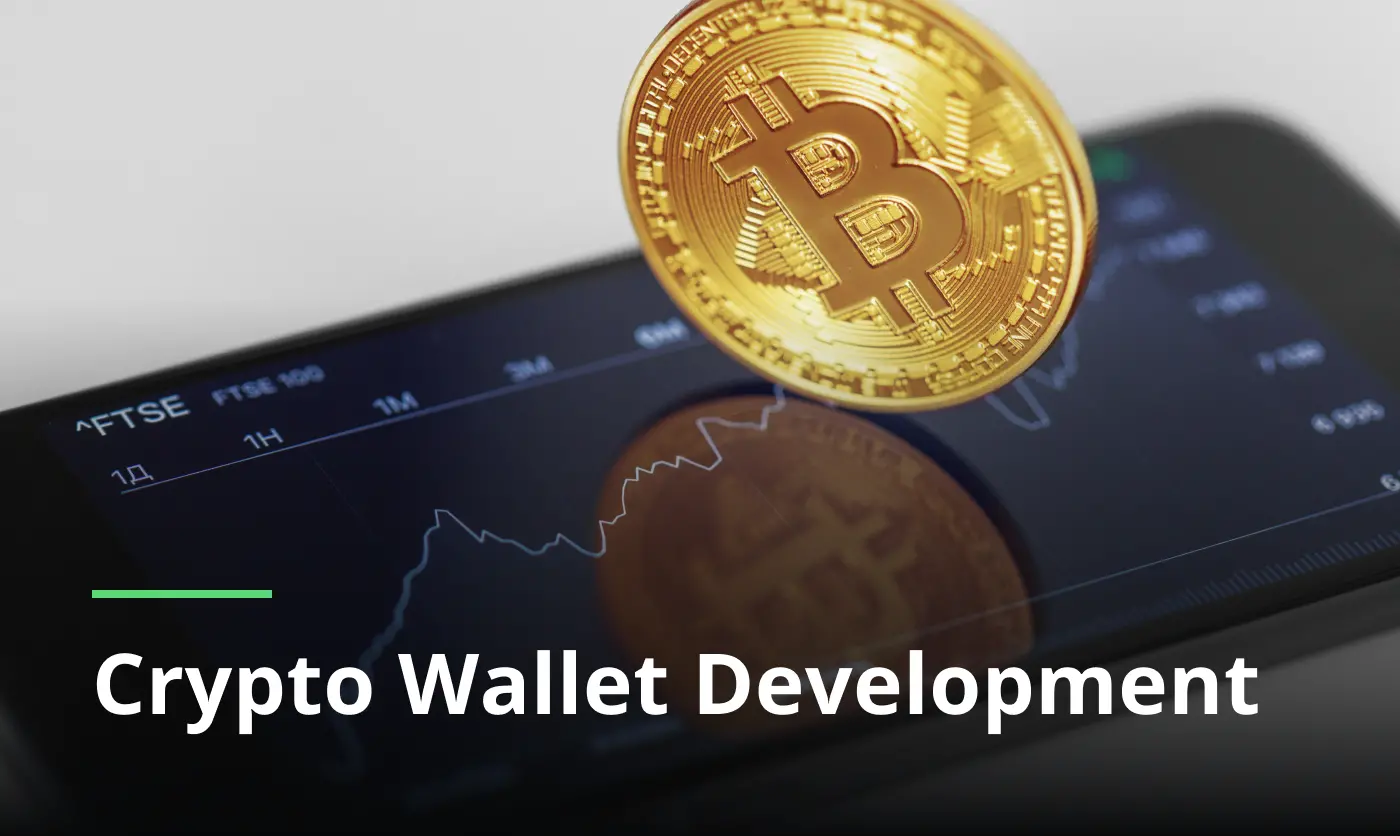
Due to stable attention to digital money all over the world, cryptocurrency wallet development became a significant discussion topic and direction for scalability that interests an abundance of businesses. To explain all the ins and outs of engineering this software type, we compiled our overview after finishing which you’ll be able to gain actionable insights.
Analyzing the subject of how to create a crypto wallet, we left no stone unturned in highlighting the building process and key components. Additionally, Limeup experts outlined the budget according to complexity of carrying out, accentuated security mechanisms and touched the point of future trends regarding blockchain coding.
Right after you finish our brief about crypto wallet development, you’ll be acquainted with the imperative basics of how to set up a workable and trustworthy system that flawlessly meets your objectives.
What is crypto wallet development?
The rising buzz around digital money led to the necessity of creating reliable and credible systems that allow us to store, manage, sell, buy assets, check the balance and even get rewards. Speaking of crypto value, according to Forbes, it has risen to $3.42 trillion and it continues to increase every day. As analytics say, in 2035 it is going to surpass the mark of $10 trillion, so introducing better digital solutions is incredibly pertinent now.
The process of forming a wallet is layered, including such steps like thorough assessment of the market to identify the failed objectives of the audience in order to deliver the product that will immediately grab the attention of users, writing practicable code and updating it.
Due to the complexity of the initiative, it’s very time-consuming to create a cryptocurrency wallet with the might of only one developer, that’s why such a task is usually embraced by cryptocurrency wallet development companies. Specialists from the mentioned agencies effectively follow strict industry rules, delivering highly protected and up-to-date digital resources.
Types of crypto wallets
The diversity of cryptocurrency platforms is extensive, some have basic functions while others open up advanced capabilities. However, they can be sorted into two major categories:
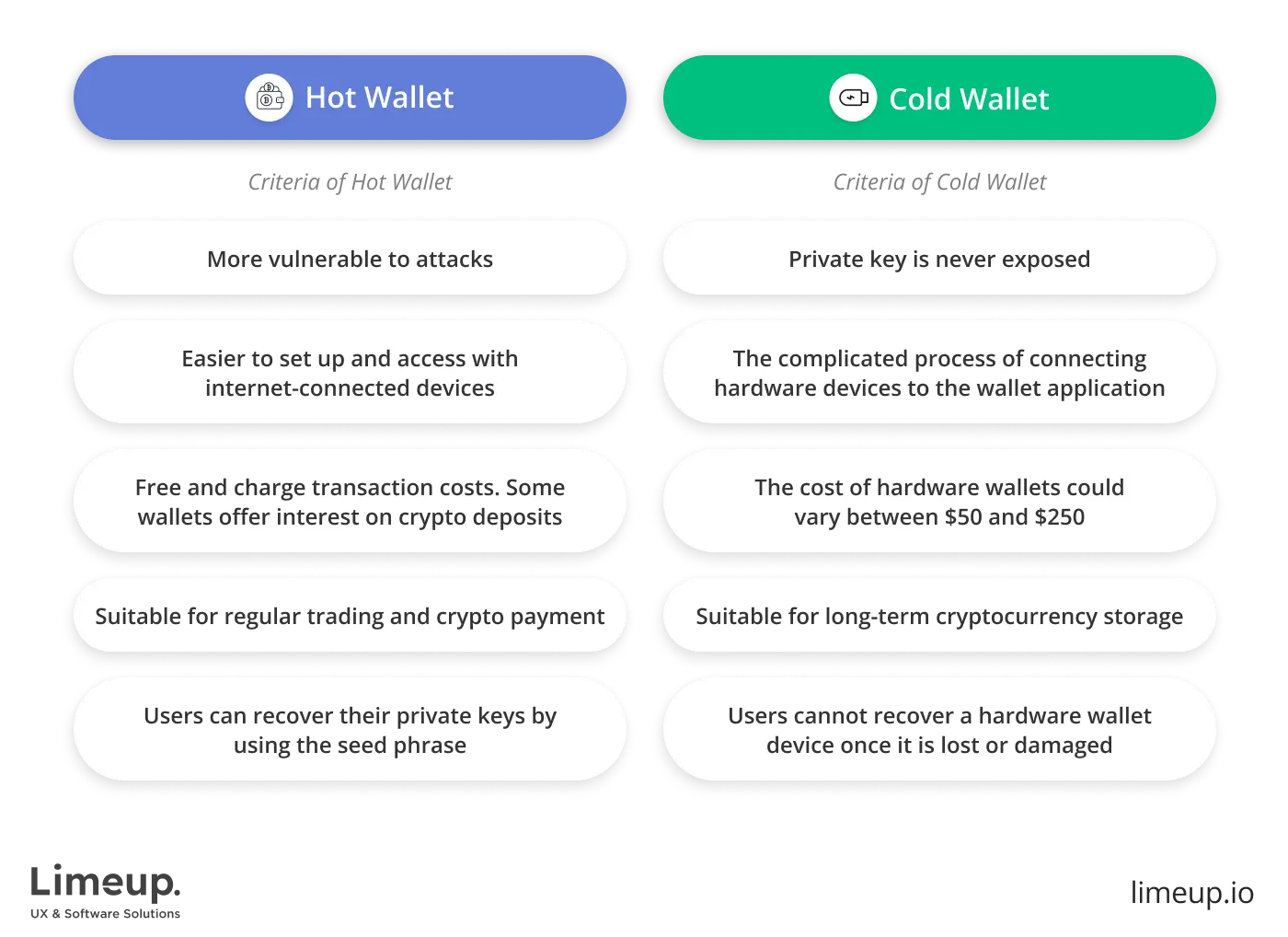
-
Hot wallets — crypto vaults that are connected to the Internet are accessible and navigable. There are three variations of such solutions — desktop version, mobile and web applications. They are usually effortless in relation to control and ease the burden of how to setup a crypto wallet for customers because it’s easy to obtain those apps in a short period of time.
Amongst numerous programs available we could note Mycelium, Coinomi, Electrum, Kraken and Metamask.
-
Cold wallets — contrary to online crypto apps, this type isn’t reachable online and it is its main advantage for the reason that it makes them more protected. Disconnected storages are divided into hardware and paper lockers and are used by organizations that hold a significant amount of digital assets, and want to make sure that they are out of the grasp of fraudsters.
While paper wallets can be presented as QR codes, there are more instances regarding hardware solutions — Trezor, Ledger, KeepKey.
How to create a crypto wallet: practical guide
The work on building your wallet starts even before you choose one of fintech app development companies as your understanding of the whole procedure is necessary in order to find a really suitable partner. Having conducted thorough research, you’ll be equipped with the knowledge that is needed to single out developers who possess certain expertise.
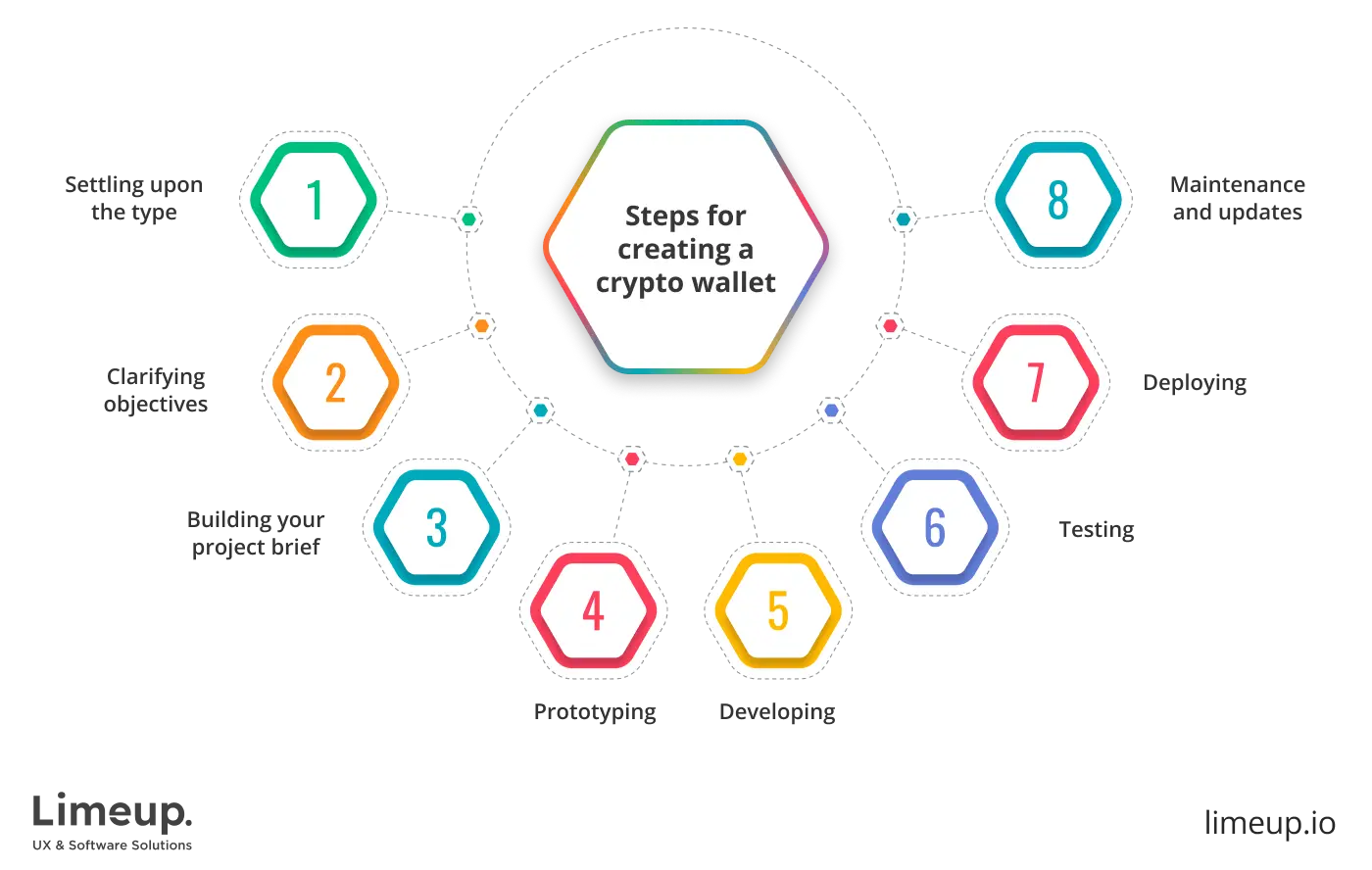
We invite you to go through every step to gain the perspective of how things go:
Step 1. Settling upon the type
Depending on your objectives and your target audience, the type of a wallet varies. For instance, if you expect to deliver to your users a hassle-free web or mobile application, see what you can get from hot wallets. Meaning for designing invulnerable vaults, consider cold wallets.
Step 2. Clarifying objectives
When you create your own crypto wallet, apart from focusing on its main mission, we advise you to explore the market and find out the basic set of functionalities provided by your competitors. In the following section you will find the essential components of crypto wallets customers usually have access to in the newest apps that will help you to get a clearer picture of must-have things.
Step 3. Building your project brief
The more your and developers’ vision of the final product is aligned, the better and faster you’ll get the finest outcomes. Before approaching the process of creation, they select a technology stack. When developing a mobile application, there are cross-platform options like React Native or Flutter, also Qt Frameworks for desktop wallets and libraries for blockchain implementations such as Web3.js and Alchemy.
Step 4. Prototyping
As soon as every basis is covered, it’s time to initiate the stage of prototype development. During this phase you have the opportunity to get the answers to whether the app will be useful for your audience, see design in action and decide if there are any adjustments needed.
Step 5. Developing
Having agreed on all details, it is the turn to make a crypto wallet’s system. The entire backend scenario based on your requirements is done during this period: APIs integration, embedding security measurements like settings for multifactor authentications and biometric features and so on.
Step 6. Testing
The cycle isn’t complete without comprehensively probing the software and detecting errors. The process of examination includes the following activities: usability checks, spotting vulnerabilities in protection, certifying high performance abilities of the program concerning time response and ensuring good third-party tools engagement. However, the order already seems tall, there are many more aspects that need to be tested.
Step 7. Deploying
After finalization of bitcoin wallet app development, the software should be moved from the environment where developers engineer it to the live space where customers have the access to it.
Step 8. Maintenance and updates
As soon as the code is released, it requires regular updates to accelerate the transactions, make the app more accessible and time relevant as well as adapt the software in accordance with your customers’ wishes.
Core features of cryptocurrency wallet development
First of all, your app can’t go without transaction administration essentials. You have ample choices on the matter of what can possibly be done in your wallet, from multi-signature deals to managing different sums and addressats in one go.
Still and all, some attributes are considered non-negotiable. They include the ability to send and receive cryptocurrency, history of exchanges, status of deal approval and data about fees.
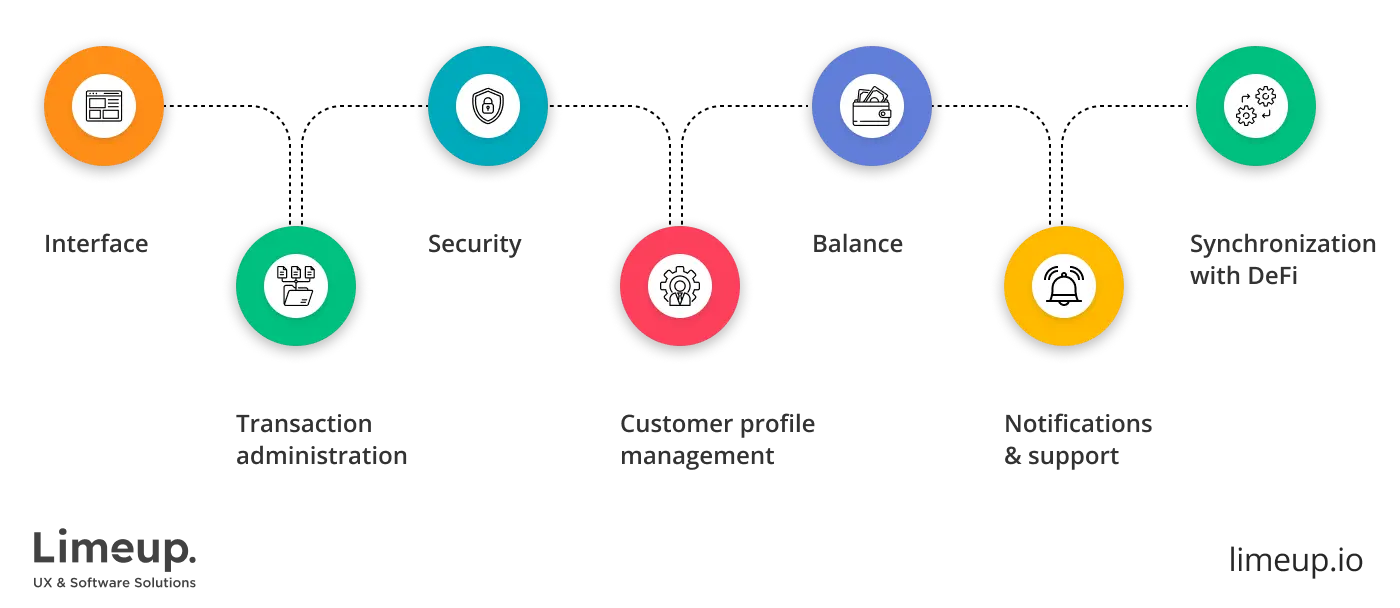
Following that, another basic component is customer profile management. The details like registration form, document verification, backup and specific for your app features need to be thought out very well. So, if you are directed toward ensuring seamless experience and look for ways of how to make a cryptocurrency wallet, make sure that your program has a good structure and logic.
A further consideration that can’t be overlooked is interface. Before anything else, the design should be accessible and usable for diverse categories of people. The best strategy is to keep everything simple, regarding colors, items and explanations. Placing the most often used features at the front, you will win a good first impression.
Another important thing a crypto app isn’t able to run successfully without its security. This element, like any other, has to be thoroughly strategized from both ends — customer interface and the system itself. A crypto wallet developer facilitates the configuration of protection that a user can customize in line with their preferences in an easy way. Defense regards not only someone’s vision of what could be good but also the need to meet all regulations like GDPR.
What’s more, balance is a fundamental that must be arranged properly. Such an easy element from the first sight in reality has the potential to be the center of attention. As a starting point, we can note safety parameters that allow users to hide and show the balance. Aside from that, there are multiple directions of development — depiction of currency value in relation to dollars or euros and balances for rewards and loyalty programs.
Afterwards, it’s mandatory for a financial application to have notifications and alerts for any changes that happen with accounts. If you are curious about how to build a crypto wallet that is informative and trustworthy, focus on every main thing happening.
In the situation when a payment fails, an income comes, an unusual activity is detected, rewards are available and updates are expected, your clients need to receive all the information. This list isn’t comprehensive and includes many more variations, for instance, new market trends, advice on rebalancing and blockchain news. However, we recommend being short and maintaining simplicity, offering users the opportunity to set the notifications based on fancies and even turn them off.
As another layer that makes a digital money program complete, support is an integral part of any system that throughout the years evolves like any other detail of blockchain wallet app development. The choices on hand cover email, phone, chats with bots and real assistants and space where the community that uses your application could exchange their observations. The types of support also ranges, encompassing technical, security and educational backing.
Finally, we can’t help but mention synchronization with DeFi which is a determining feature of crypto systems. This part equips customers with countless opportunities such as connection to their finances without engagement of other sides and offers means for swapping, staking, farming and borrowing.
The right compilation of these particularities is what makes an application efficient and none of them can be skipped if you want your product to stand against other proposals.
How much does it cost to create a crypto wallet?
Estimating prices can only be approximated as every single project is unique and has its own distinctive features. The region, expertness and the scale of an undertaking are the major determinants.
Let’s study how much the scope of work changes the price:
| Level: Basic | |
| This entry-version kind of wallet incorporates the most essential features, providing users a chance to complete some simple actions with their digital assets. | |
| Coinbase and Exodus are examples of simple applications that are of great use only to those who have only entered the digital money industry. | $30,000–$60,000 |
| Level: Middle | |
| How to create a digital wallet for cryptocurrency that will be favorable for a great audience? In comparison to the basic applications we described above, this type is more beneficial due to stronger security methods, availability of options like swapping and the chance to store more than one currency. | |
| An upgraded version of basic apps that have additional layers of security and functionalities, MetaMask and Atomic Wallet offer seamless experience for practiced consumers.. | $50,000–$110,000 |
| Level: Advance | |
| Trying to please a more choosy audience, the solutions can be these: give them the full control over their assets, provide them a high level of customization and enable multi-sig transactions approval. | |
| Ledger and Trezor are illustrations of scalable systems for true crypto devotees. | $100,000–$300,000 |
| Level: Enterprise | |
| Building this class of application, crypto wallet developers spearhead innovations, coming up with the best conditions for staking and lending, making sure that the system is unshakable, bringing into being their clients’ unique ideas. | |
| The list of corporate-grade cryptosystems includes such well-known titles as MyCripto and BitGo. | $300,000–$1,000,000 |
Keep in mind: The prices and company examples are approximate as the real deals are undisclosed.
As you can notice, the range of fees is unthinkable, sometimes two times more compared to the minimal sum. That’s where the practice and knowledge of specific tools double or triple the number. Those engineers who only gain experience, deliver lower price services, yet they aren’t always able to write really clean codes and overcome complex challenges.
Look at the average hourly sums that are common in the industry:
| Expertness | Payment per hour |
| Juniors | $25–$50 |
| Middles | $50–$100 |
| Senior specialists | $100–$150 |
Now let’s observe the last money-related point we gathered in this part on how to make a crypto wallet:
| Location | Tariffs |
| Asia (Pakistan, India) | $25–$80 |
| Eastern Europe (Ukraine, Romania) | $50–$100 |
| Western Europe (Germany, France) | $100–$150 |
| United Kingdom | $100–$150 |
| United States | $100–$150 |
This distinction is caused by these factors:
- The level of life isn’t the same in every region.
- Additional regulations and big taxes increase the budget.
- The talent pool is greater in certain places.
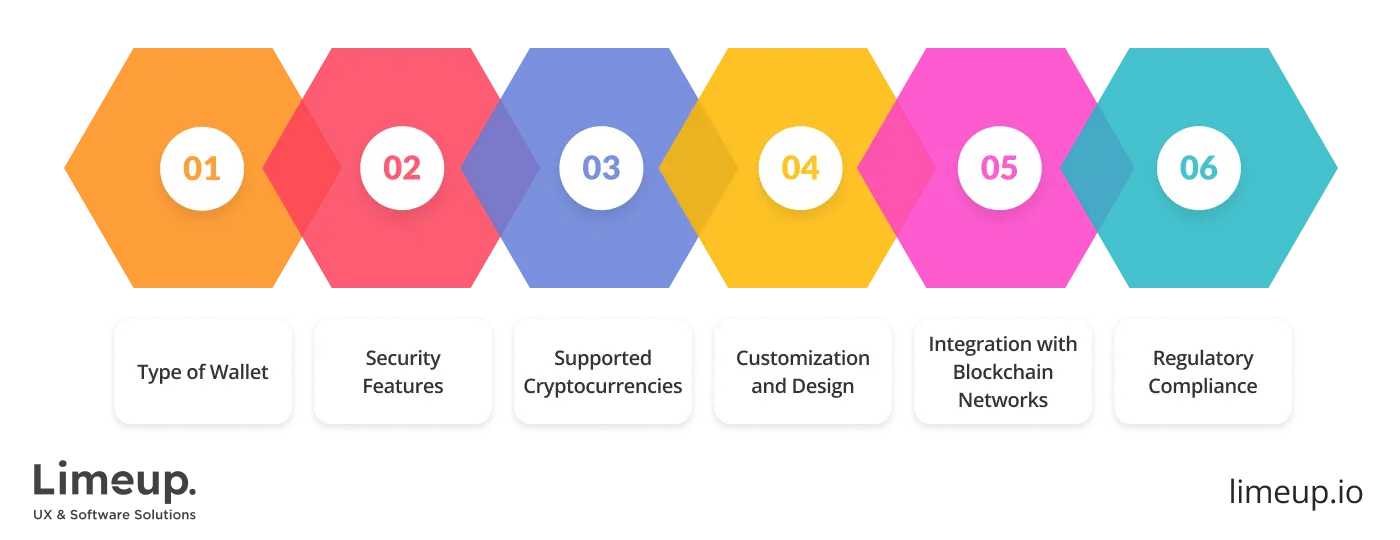
On top of that, in some cases the team number and the reputation of the executors play a pivotal role. Find more about an app development cost.
Security measures in crypto wallet app development
We have raised the topic of security a few times so far since there is nothing as vital as establishing a strong safe environment to store crypto money. In this passage of our synopsis we are going to explore the choices in reach that are related to enhancing your program integrity:
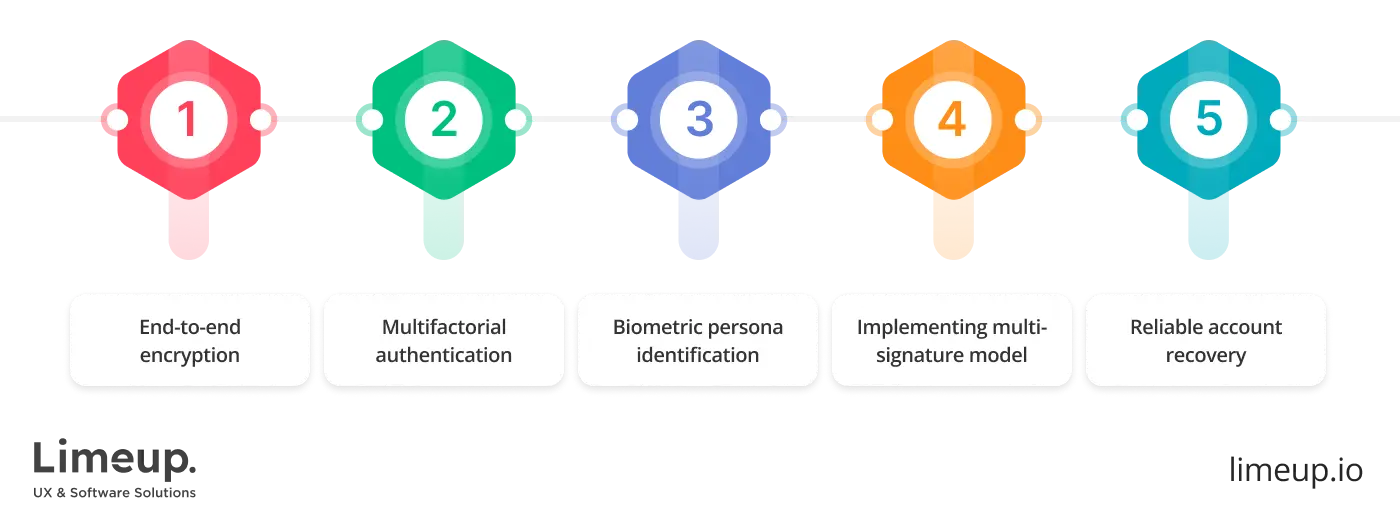
- End-to-end encryption
From the initial phase to the very end, any transaction should be closed so even intermediaries that participate in knocking the entire procedure together won’t be able to look into sensitive information. The main advantage of E2EE is that the owners of wallets don’t have to rely on third parties’ good intentions as this approach removes the chance of leaking the data.
If you focus on how to create a cryptocurrency wallet that is locked as a safe, this cryptographic technique method is a common approach to evaluate. The one thing that we must add — it doesn’t go alone. A truly trustworthy application is protected from different kinds of fraud.
- Multifactorial authentication
Engineers haven’t achieved the peak of protection capabilities yet and we can’t say that some of the methods are excessive and, of course, a few steps of confirmation stay at the top of things as it’s viewed as a trusty tactic to prevent theft even if the password was compromised.
- Biometric persona identification
The perks of adopting biometric data to secure the usage of a digital vault are above just transactions validating and signing in the account. A plethora of functions like recovering access, opening necessary information, connecting multiple devices are simplified by embedding this method in an app and as we can see, a myriad of vendors choose this way.
Contemplating on how to start a crypto wallet that is well defended and at the same time accessible, surely pay attention to this strategy, but remember that even facial and fingertip recognition has to follow the requirements. It means that systems should be certified, credible and encrypted.
- Implementing multi-signature model
Administering significant budgets becomes safer when a few keys are required to be provided to get an access to the funds. Giving your customers the opportunity to use 2 of 3 or 3 of 5 signature platforms, you’ll catch the interest of crypto enthusiasts that set the protection standards first and look for trustworthy platforms.
- Reliable account recovery
Making a crypto wallet, bear in mind your audience in every small detail. Is your wallet for advanced users or beginners? The array of selections related to renewing the access to a lost account is vast, including approving your persona by trusted contacts, storing restatement information on hardware devices and using special keys obtained after signing up, in order to satisfy different groups of people.
The account retrieval that is riskless and diverse contributes significantly to the overall app acceptance, since if people lose control over their possessions and can’t restore them no matter what they do, it influences the reputation of the platform. Simultaneously, if the means are too simple, it can hurt the safety. Remain consistent.
What challenges are in blockchain wallet development?
Although almost every blockchain financial solution adds a layer of complexity to any system, the advantages it brings are worth a try. Now let’s dive into the intricacies of a wallet formation:
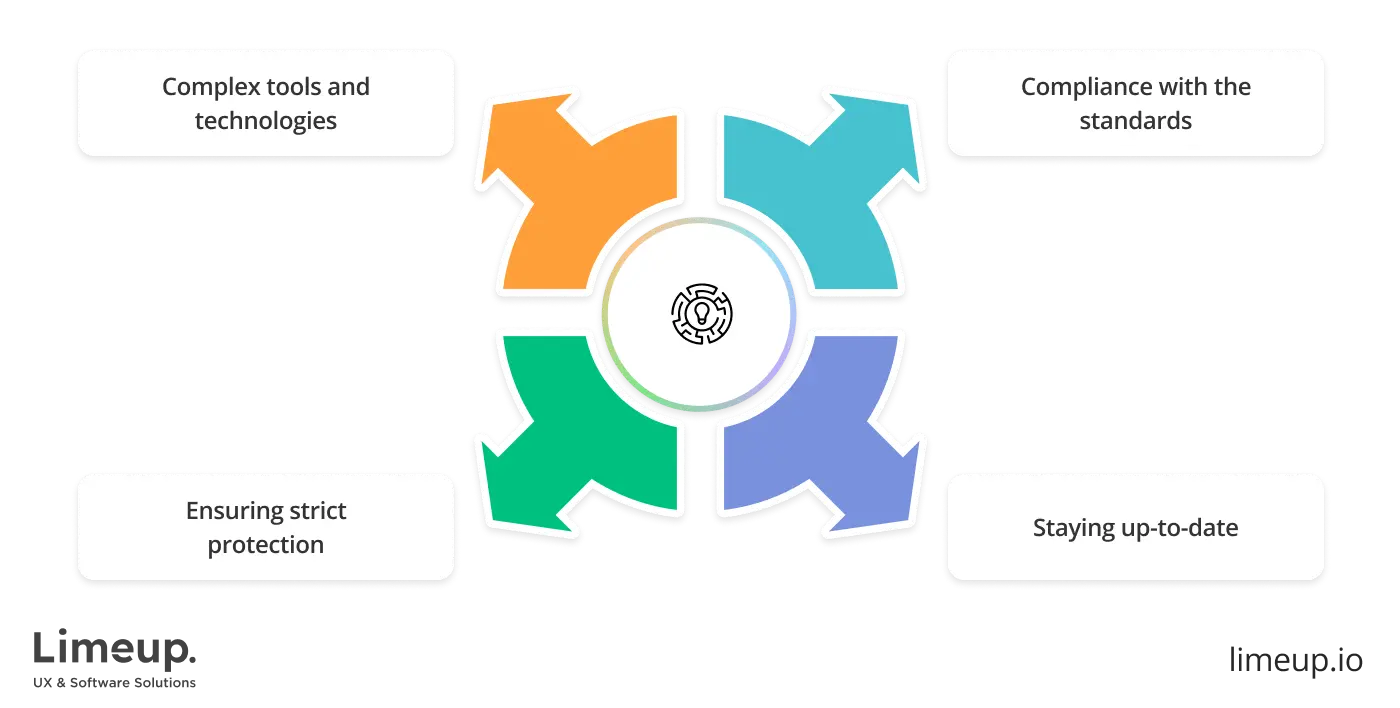
Complex tools and technologies. Advanced understanding of different facets of coding is the secret that makes renowned providers successful. They know how to develop software with a design that is both appealing to an eye and accessible, choosing the right framework, beneficial in a particular situation.
Fintech software development companies you will assign for this role should have proven experience in dealing with the tough coding puzzles, especially if your idea is complex and multifaceted.
Compliance with the standards. Creating a crypto wallet, you not only make sure that your application corresponds to the expectations of your audience and brings something new to the industry, but you need to double check your software abundance by regulations and laws. And what introduces unforeseen challenges — every country has its own vision of what is acceptable.
For example, in the USA you need to study carefully AML and KYC which stand for Anti-Money Laundering and Know Your Customer regulations. In the EU, apart from the mentioned rules, businesses are obligated to follow MiCa in order to get the necessary license. In the UK, be ready to register your software with the Financial Conduct Authority.
Ensuring strict protection. As we said earlier, secure cryptocurrency wallet app development and seamless experience demand innovative methods and sophisticated approaches. Financial application safety determines the entire success of the launch since no matter how functional, fast and appealing the software, without strong defence, it won’t bring satisfying results.
Everything from the storage of data to transactions and communication should be protected decently. There is where loyalty begins.
Staying up-to-date. From the blend of the factors stated above arose the biggest challenge of being relevant that influences how you set up a crypto wallet. The features, encryption, and blockchain technologies undergo continuous changes since a plethora of companies like Revolut, PayPal, Binance and Coinbase actively work on improvement of the existing conditions that entail other developers to be on top of things.
As Bitcoin.com remains the most popular cryptocurrency platform since its establishment in 2009, it shows us that to be ahead of the curve is possible even after years. Yet, they continue eagerly searching for answers to advance privacy, streamline transactions and introduce new functionalities.
Note: The solution to address all of these concerns is to involve experts to the entire process of development to ascertain that every choice is data-driven and value based.
How to get a crypto wallet: future trends
Whether you want to add a few adjustments to your existing crypto app or design a brand new storage proposition, these insights, summarised below will give you a hint of what path of advancement to choose. So, let’s study the tendencies that are evident in this industry and are forecasted to be of a great importance in the future:
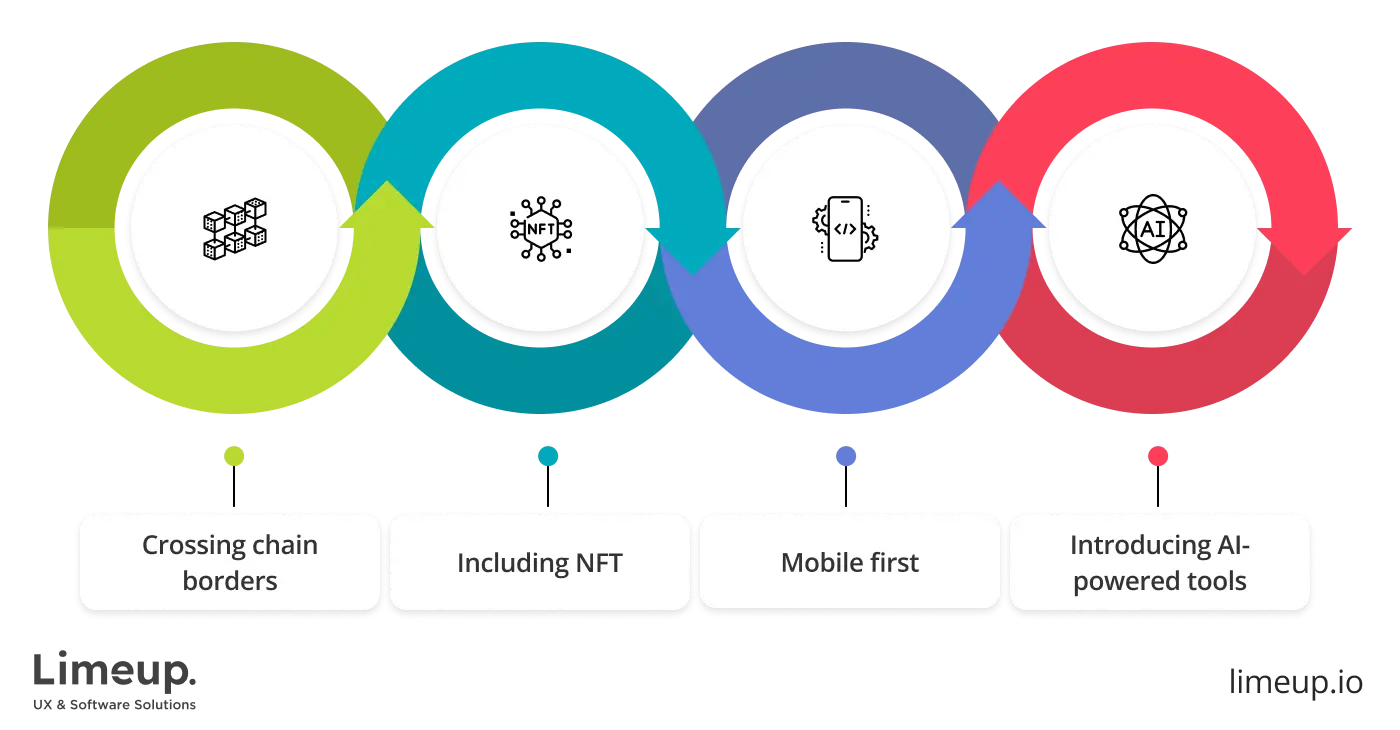
— Crossing chain borders
It used to be enough to support one kind of blockchain within one app, but it’s clear that this tendency is going to be replaced by a multi-chain method that allows users to administer the multitude of their assets using only one program. Although it secures the opportunity to allocate all the resources in one place that is more user friendly, such a method is beneficial only when the security is impeccable.
Nevertheless, multi-chain wallets are projected to be a default as despite any disadvantages, it’s convenient and applicable when you develop a crypto wallet. This model is implemented in the systems of crypto platforms like Trust Wallet, Ledger Live, Coinomi, MetaMask, Atomic Wallet and more. The range of blockchains that can be controlled from one wallet rises up to 300 in Atomic Wallet.
— Including NFT
Emergence of the practice of connecting NFT assets to crypto wallets and maintaining them as any other cryptocurrency encourages startups and leaders of the sphere to incorporate this technology into their products. The idea is represented in several ways, from linking to marketplaces like OpenSea to separate galleries where users can watch their NFT assets.
Thinking of how to create a crypto wallet app that enables customers to store or even trade their digital artworks, there are a few notable examples like XDEFI Wallet that offers a variety of instruments to hold and stake their tokenized items, Rainbow Wallet with a distinctive design and Trust Wallet that lets people conclude multi-chain deals.

— Mobile first
Setting aside some complex enterprise matters, most latest programs are released in the form of mobile applications. If you want to know how to develop a crypto wallet that will be within reach of your potential audience, consider this option.
Though mobile financial program is rather classic choice that is explained by the increasing quantity of smartphones in the world, with the opportunity given by AppStore and Play Market, an app has chance to be seen by target customers. The rate of downloads of crypto apps in 2024 that in five months broke the number of 91.4M proves its growing hype.
— Introducing AI-powered tools
Setting up a crypto wallet with AI instruments adds worth to the application. It has an enormous impact on plenty of facets of crypto programs. They personalize customers’ experiences by offering recommendations based on their activities, proposing board arrangements and special themes.
Vendors like Zerion and Crypto.com help their clients to be informed about the right time when to move their assets. Coinbase teaches its users how to trade effectively, involving AI tools to determine when to act. It’s difficult to count how many of the platforms adopt the matching intelligence to process and give advice on users’ requests. It’s a tool that is going to shape the way applications will look in the future and the manner businesses interact with clients.
Conclusion
To sum up the stated above, we highlighted three topics that are cornerstones of bitcoin wallet development: first, it’s important to be involved in the process and research all the nuances to be fully acquainted with the inner workings of the deliverable, second, knowing your customer isn’t optional — in many places it’s a requirement that should be followed, and third, delegating the tasks to trained and seasoned developers is a safe route to avoid a plethora of pitfalls.
You have the opportunity to cut down on complexity by entrusting your project to Limeup. Our experts are proficient in managing projects of any scale, providing customized solutions according to your specifications. We are entirely committed to not only meeting expectations, but making certain that the cooperation will result in creating a product of the highest quality.
Build a crypto wallet with Limeup. Contact us to get the most out of your idea.

